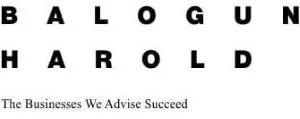- within Energy and Natural Resources topic(s)
- in United States
- within Energy and Natural Resources topic(s)
- in United States
- with readers working within the Technology and Law Firm industries
- within Employment and HR, Consumer Protection and Privacy topic(s)
The Nigeria-Morocco Gas Pipeline (NMGP) represents one of Africa's most ambitious cross-border infrastructure projects. As planning advances, a critical lesson from prior successful projects, most notably the West African Gas Pipeline (WAGP), is the central importance of establishing a clear, stable, and enforceable tariff methodology.
This legal update highlights the importance of a bankable tariff methodology for the NMGP using WAGP's Tariff Methodology Agreement (TMA) as a benchmark for structuring NMGP's commercial framework.
Commercial Context
Especially for long-term, capital-intensive projects like cross-border pipelines, revenue predictability is the foundation for attracting both debt and equity capital. The tariff methodology is the instrument that delivers this predictability. Amongst others, a standard tariff methodology will address key commercial questions:
- How will transportation charges be calculated over the project's lifespan?
- What capital and operating costs will be recovered through tariffs?
- How will investors earn a return on capital deployed?
- How will tariffs adjust for inflation, throughput volumes, or cost changes?
- (Who controls changes to tariff levels and how are disputes resolved?
In the absence of a stable, treaty-backed tariff framework, lenders and sponsors will perceive significant regulatory risk, especially in multi-jurisdictional projects where host states retain wide fiscal discretion.
The Complexity of Cross-Border Pipelines
Projects such as NMGP involve numerous sovereign states, each with, distinct fiscal regimes and political priorities; separate regulatory authorities, diverging political risk profiles; and currency and foreign exchange exposures.
Fragmented national tariff-setting rules across 13 countries would generate unacceptable uncertainty for project financiers. Therefore, a unified, multilateral tariff framework is not just desirable but also essential for commercial viability.
Lessons from WAGP: The Tariff Methodology Agreement (TMA) Model
The WAGP TMA provides a valuable legal precedent. Its core features directly address many of the legal and commercial challenges NMGP will face:
- Treaty-Embedded Tariff Framework: The TMA was incorporated into the WAGP Treaty and domestic law of each participating country, giving it binding effect internationally and domestically.
- Transparent Formula-Based Calculations: Tariffs are calculated based on clear, agreed financial models covering: (a) Capital recovery (depreciation and return on investment); (b( Operating and maintenance cost recovery; (c) Return on equity and (d) Tax components.
- Currency Stabilization: Tariffs are denominated in US dollars, shielding investors from multi-currency volatility across member states.
- Pre-Agreed Adjustment Mechanisms: The TMA sets out automatic, formula-driven adjustments for inflation, throughput changes, and actual operating cost variations.
- Regulatory Stabilization: Host governments contractually waived unilateral rights to amend tariff terms. Any amendments require multilateral agreement, protecting against political interference.
- Neutral Dispute Resolution: International arbitration governs tariff disputes, providing confidence to investors that future disagreements will be handled neutrally.
Implications for NMGP Tariff Design
Given NMGP's significantly larger geographic footprint and political complexity, a similarly robust tariff methodology is even more critical. Without a harmonized, treaty-backed tariff methodology, NMGP may struggle to attract private capital or secure long-term shipper commitments.
To build on WAGP's success, we expect that the tariff framework of the NMGP would include (a) Treaty -anchored legal status enforceable under both international and domestic law; (b) Fully transparent, formula-based tariff calculations (c) Currency denomination in a stable international currency (e.g. USD) (d) Automatic adjustment mechanisms for cost, inflation, and operational changes (e) Stabilization provisions limiting host state discretion; (f) Neutral, internationally enforceable dispute resolution mechanisms.
Conclusion
The experience of WAGP demonstrates that comprehensive, treaty-based tariff methodologies are not ancillary legal issues but core instruments of bankability. As NMGP progresses, sponsors and policymakers would expectedly treat tariff design as a first-order legal and financial negotiation as failure to do so risks introducing regulatory uncertainty that can impair the ability to attract commercial financing and long-term shipper confidence.
The content of this article is intended to provide a general guide to the subject matter. Specialist advice should be sought about your specific circumstances.



